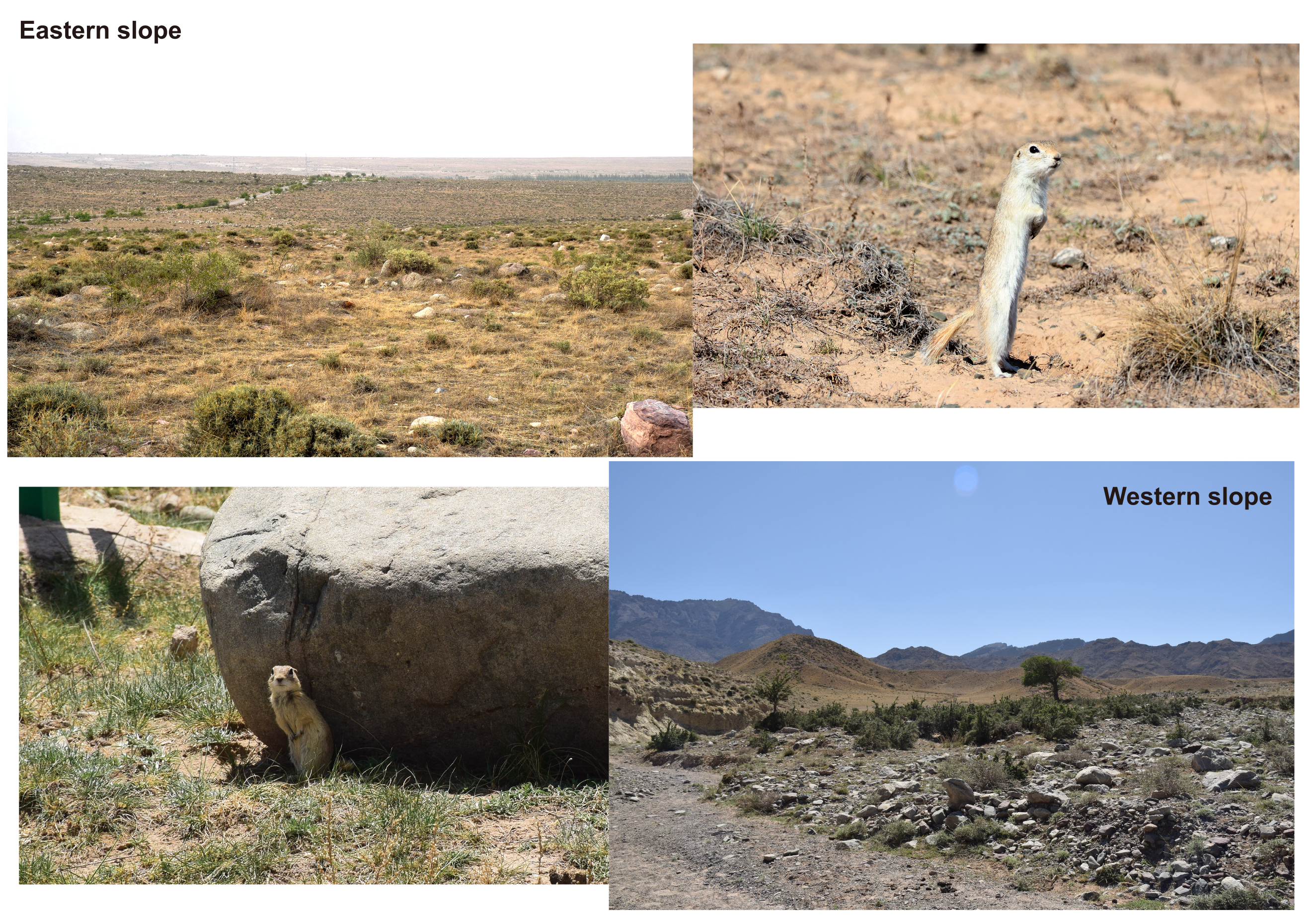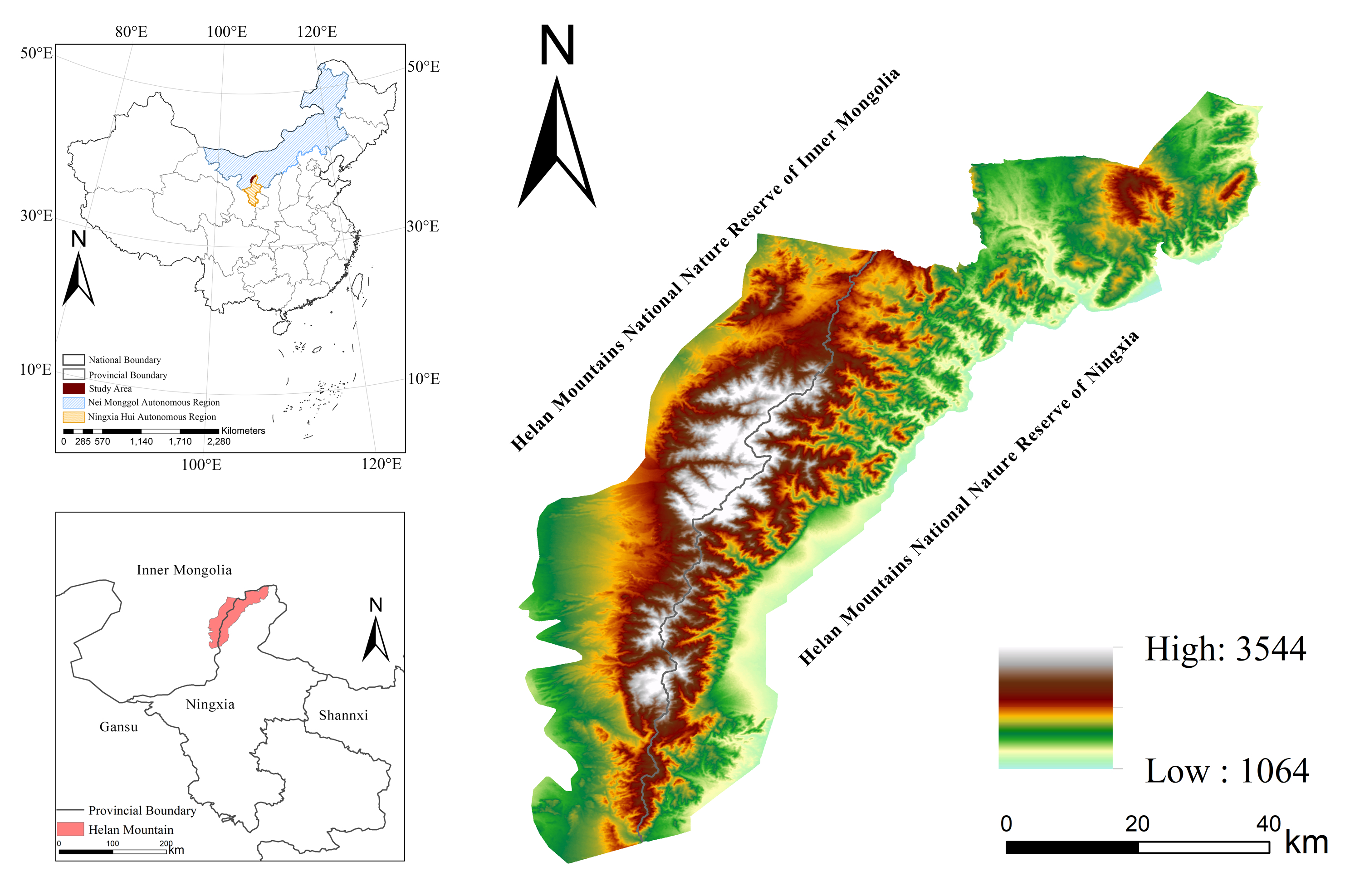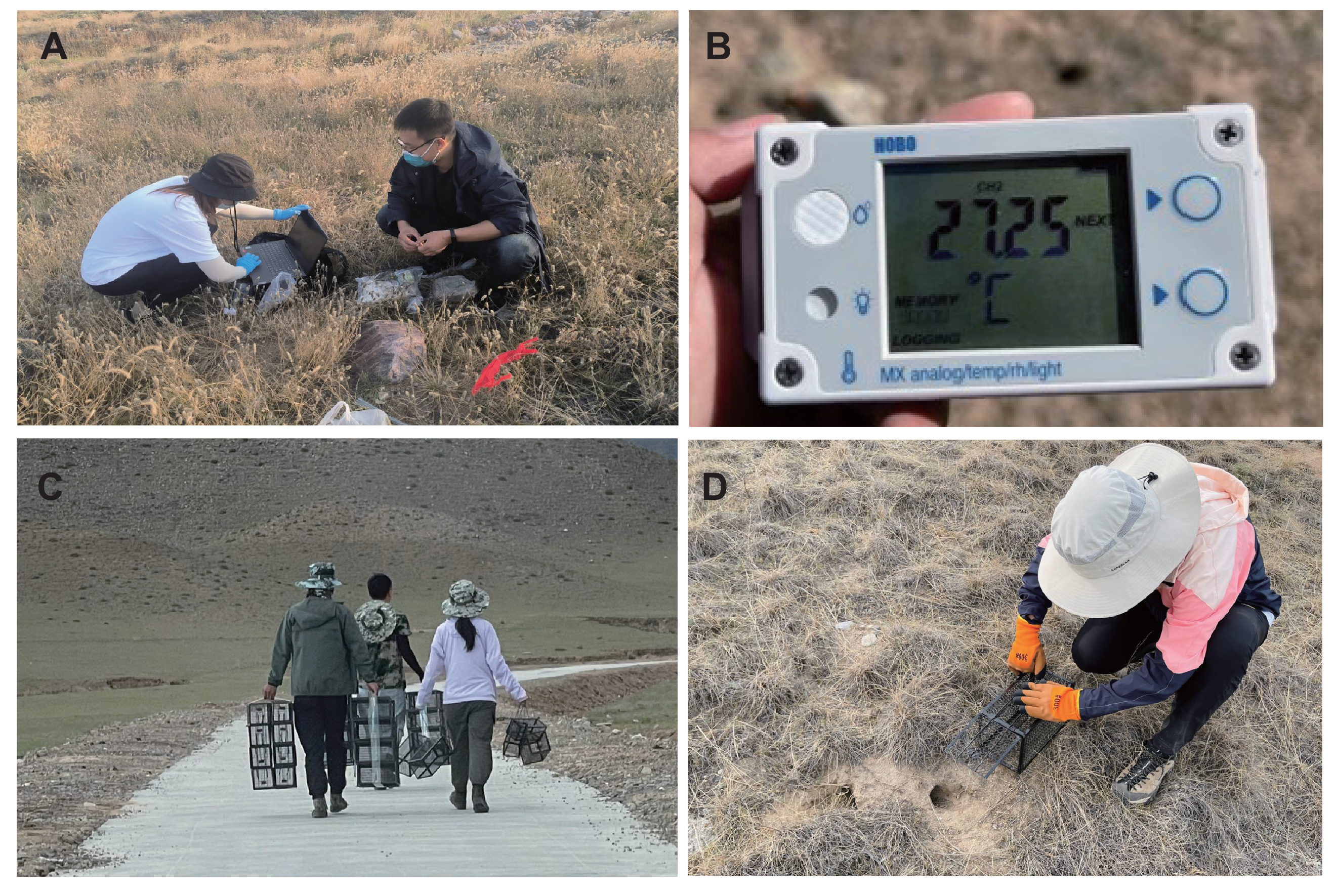Unveiling Rodent Adaptation in the Helan Mountains: Comprehensive Transcriptomic and Metagenomic Data
Published in Earth & Environment, Ecology & Evolution, and Microbiology

Impact and Adaptation: The Role of Climate Change in Mammal Evolution and Ecosystem Dynamics
Climate change significantly affects organisms globally, influencing the growth, development, and survival of animals and impacting ecosystem structure and function. Mammals adapt to their environments through behavioural, physiological, or structural changes, with the environment shaping mammal evolution. Understanding the effects of climate change on individual fitness and survival, and the underlying mechanisms, is a key focus of global change research. Our team has conducted research in the Helan Mountains for over 20 years, including seasonal studies on the gut microbiota of the Alashan ground squirrel. This research enhances our understanding of how global climate change affects the ecological environment of small mammals and provides valuable insights into the adaptation mechanisms of wild rodents to various environments.

Helan Mountains: A Unique Natural Laboratory for Studying Wildlife Adaptation and Ecosystem Dynamics
The Helan Mountains, straddling the border between the Ningxia Hui Autonomous Region and the Inner Mongolia Autonomous Region, lie between the Yinchuan Plain and the Alashan Plateau. This unique geographical positioning marks them as a significant boundary in Northwestern China. The distinct environmental conditions of the Helan Mountains create a unique ecological environment that differs from surrounding areas. These special ecological processes and the rich biodiversity present are key reasons why the Helan Mountains serve as a "natural experimental base" The mountains are divided into two management areas: the Ningxia Helan Mountain Nature Reserve (East Slope) and the Inner Mongolia Helan Mountain Nature Reserve (West Slope). The east slope features a steep terrain with a dry climate, high temperatures, and sparse vegetation, whereas the west slope is more gentle, with a moist climate and dense vegetation. The complex and diverse vegetation, along with richer animal and plant resources compared to surrounding areas, make this region particularly interesting for research. However, the challenging terrain has limited detailed studies, especially on the area's rodents. The Alashan ground squirrel, a key part of the Helan Mountains' ecosystem and a major food source for small carnivores, is widely distributed in the area. Given their sensitivity to habitat changes, rodents are often used as indicator species for studying ecosystem changes. Therefore, research on the Alashan ground squirrel is crucial for understanding how small wild mammals adapt to global climate change.

Challenging Perceptions: The Complex Role of Alashan Ground Squirrels in Ecosystem Health and Research Difficulties
Rodents often elicit a negative reaction due to historical portrayals that highlight their role in food theft, crop damage, and disease transmission, including the plague. The Alashan ground squirrel is frequently included in these perceptions. Characterised by large populations and rapid reproductive cycles, these squirrels are deemed pests in grasslands, posing no threat of endangerment. This study, supported by the China National Forestry and Grassland Administration, involved sample collection amidst pest control efforts in the grasslands of the Helan Mountains in Ningxia and Inner Mongolia. Our findings indicated that Alashan ground squirrels on the west slope were heavier than those on the east slope. Sample collection presented challenges; the east slope experiences high summer temperatures, reaching up to 38°C in 2022. The extensive duration and large sample volume required for the experiment made the survey demanding and labour-intensive, affecting the research team. Additionally, the remote location of the Helan Mountains from urban centres complicated sample collection, preservation, and transportation, requiring considerable energy and time. Nonetheless, with ongoing improvements in the Helan Mountains' infrastructure, these challenges have been effectively addressed.

Unveiling the Gut Microbiome: A Key to Understanding Rodent Adaptation and Ecosystem Response to Climate Change
This study investigates the gut microbiome of Alashan ground squirrels located on the east and west slopes of the Helan Mountains through metagenomic and transcriptomic analyses. Its objective is to understand how environmental factors and animal phenotypes relate to the structure and function of the gut microbiome, thus shedding light on the adaptation mechanisms of these squirrels to different environmental conditions. We collected transcriptome data from five tissue types (heart, liver, cecum, muscle, and blood) from 20 individuals, alongside metagenomic data from their faecal matter. The transcriptome samples were preserved in TRIzol and stored at –80°C within five minutes of collection. The experimental procedures included RNA extraction, library construction, sequencing, and comprehensive bioinformatics analysis, resulting in 787.41 Gb of clean data and the assembly of 72,156 unigenes. For the metagenomic samples, preservation and analysis followed a similar protocol, identifying major bacterial groups such as Firmicutes, Bacteroidetes, and Proteobacteria. This study provides the first extensive metagenomic and transcriptomic dataset for this species, highlighting the importance of rodents in desert ecosystems and their role in responding to climate change and preserving biodiversity in the Helan Mountains.
Research on how the gut microbiome varies with different environments, its impact on the host, and its role in energy metabolism at the molecular level is still scarce. This study contributes valuable data and theoretical insights into the effects of global climate change on rodents in the Helan Mountains, focusing on ecological adaptability, disease transmission, and more. The Helan Mountains serve as an exceptional site for ecological studies. Our findings enrich the research base of the region, offering new directions for rodent research and holding significant scientific value. Future research should intensify focus on small rodents in the Helan Mountains to bridge the gap in understanding of gut micro-ecology and responses to global climate change.
Follow the Topic
-
Scientific Data

A peer-reviewed, open-access journal for descriptions of datasets, and research that advances the sharing and reuse of scientific data.
Related Collections
With Collections, you can get published faster and increase your visibility.
Data for crop management
Publishing Model: Open Access
Deadline: Jan 17, 2026
Computed Tomography (CT) Datasets
Publishing Model: Open Access
Deadline: Feb 21, 2026



Please sign in or register for FREE
If you are a registered user on Research Communities by Springer Nature, please sign in